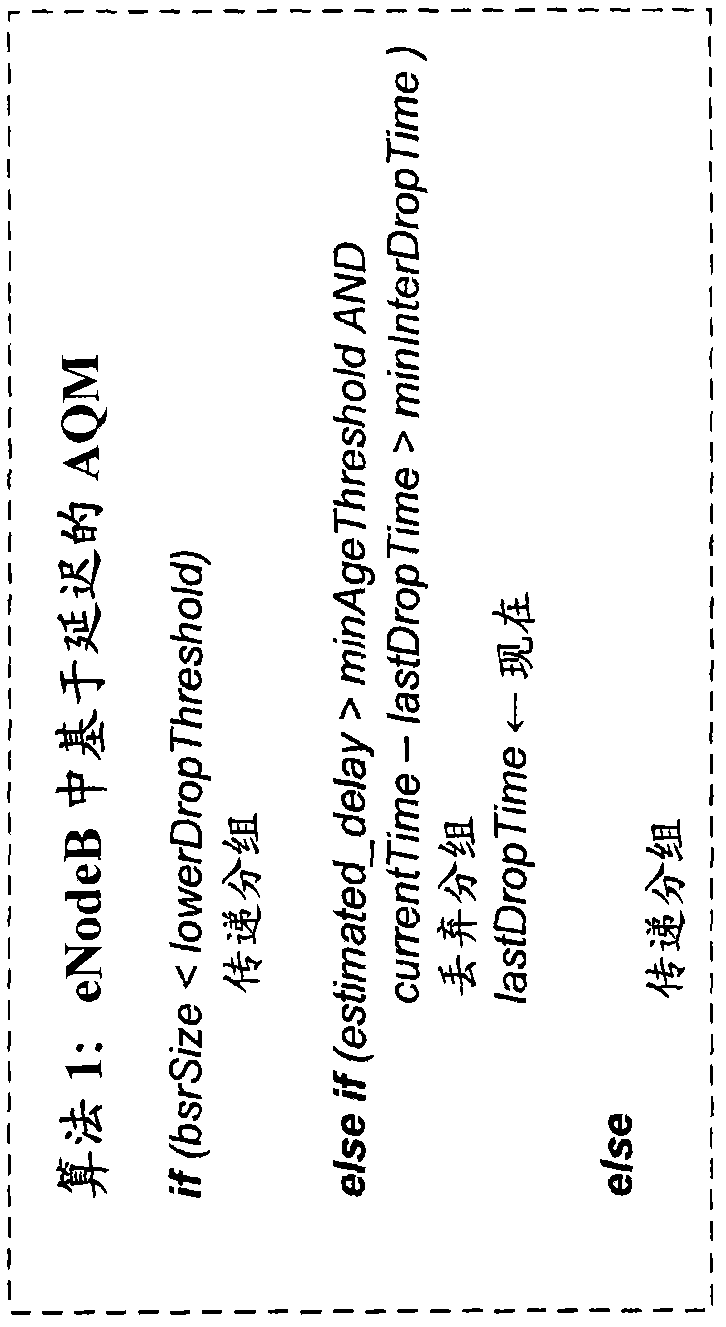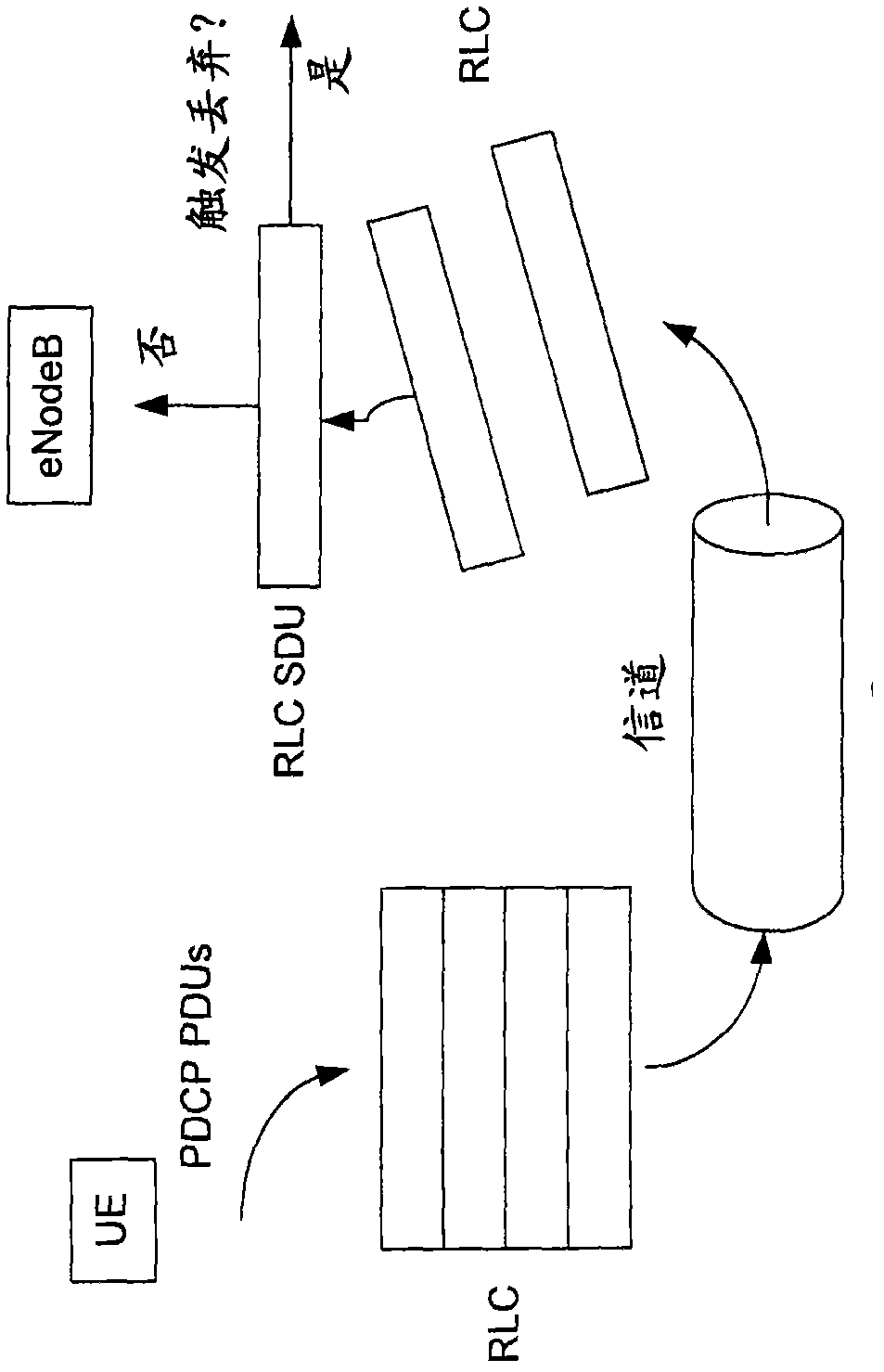Active queue management for wireless communication network uplink
A technology for transmitting queues and connections, applied in the field of wireless communication networks, and can solve problems such as unavailability
- Summary
- Abstract
- Description
- Claims
- Application Information
AI Technical Summary
Problems solved by technology
Method used
Image
Examples
Embodiment Construction
[0019] Active Queue Management (AQM) maintains high link utilization and low end-to-end latency compared to queue size-based approaches such as PDPC. In addition, AQM is less affected by bandwidth changes. Thus, in the new algorithm proposed in this invention, the delay-based principle is preserved. Advantageously, however, a base station, such as an eNodeB in an LTE network, provides delay-based queue management for user equipment (UE), such as mobile terminals.
[0020] In order to apply this principle in an eNodeB or other wireless communication network base station, the eNodeB should know the queuing delay of packets in the UE buffer. However, the UE queuing delay is not directly known in the eNodeB and needs to be estimated. A general description of the proposed AQM algorithm and supported delay estimation method for one or more embodiments of the invention is disclosed below.
[0021] Latency-based AQM in eNodeB
[0022] In LTE, a Buffer Status Report (BSR) is tran...
PUM
 Login to View More
Login to View More Abstract
Description
Claims
Application Information
 Login to View More
Login to View More - R&D
- Intellectual Property
- Life Sciences
- Materials
- Tech Scout
- Unparalleled Data Quality
- Higher Quality Content
- 60% Fewer Hallucinations
Browse by: Latest US Patents, China's latest patents, Technical Efficacy Thesaurus, Application Domain, Technology Topic, Popular Technical Reports.
© 2025 PatSnap. All rights reserved.Legal|Privacy policy|Modern Slavery Act Transparency Statement|Sitemap|About US| Contact US: help@patsnap.com



